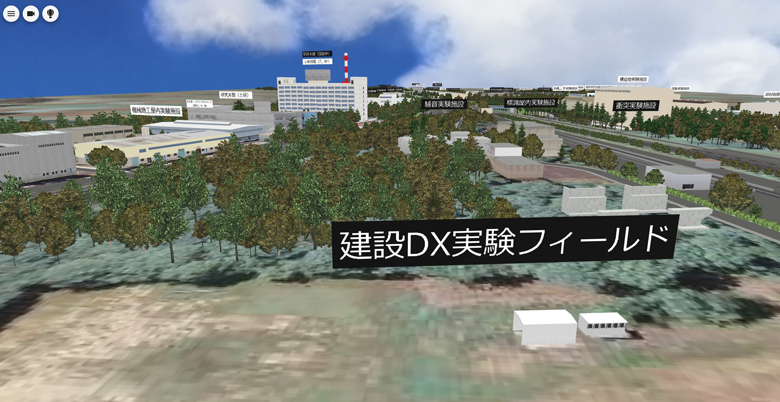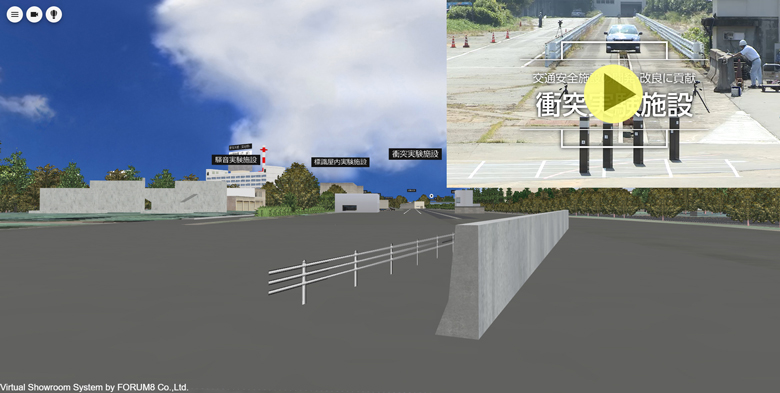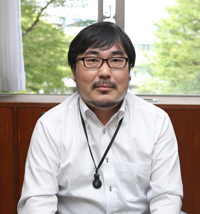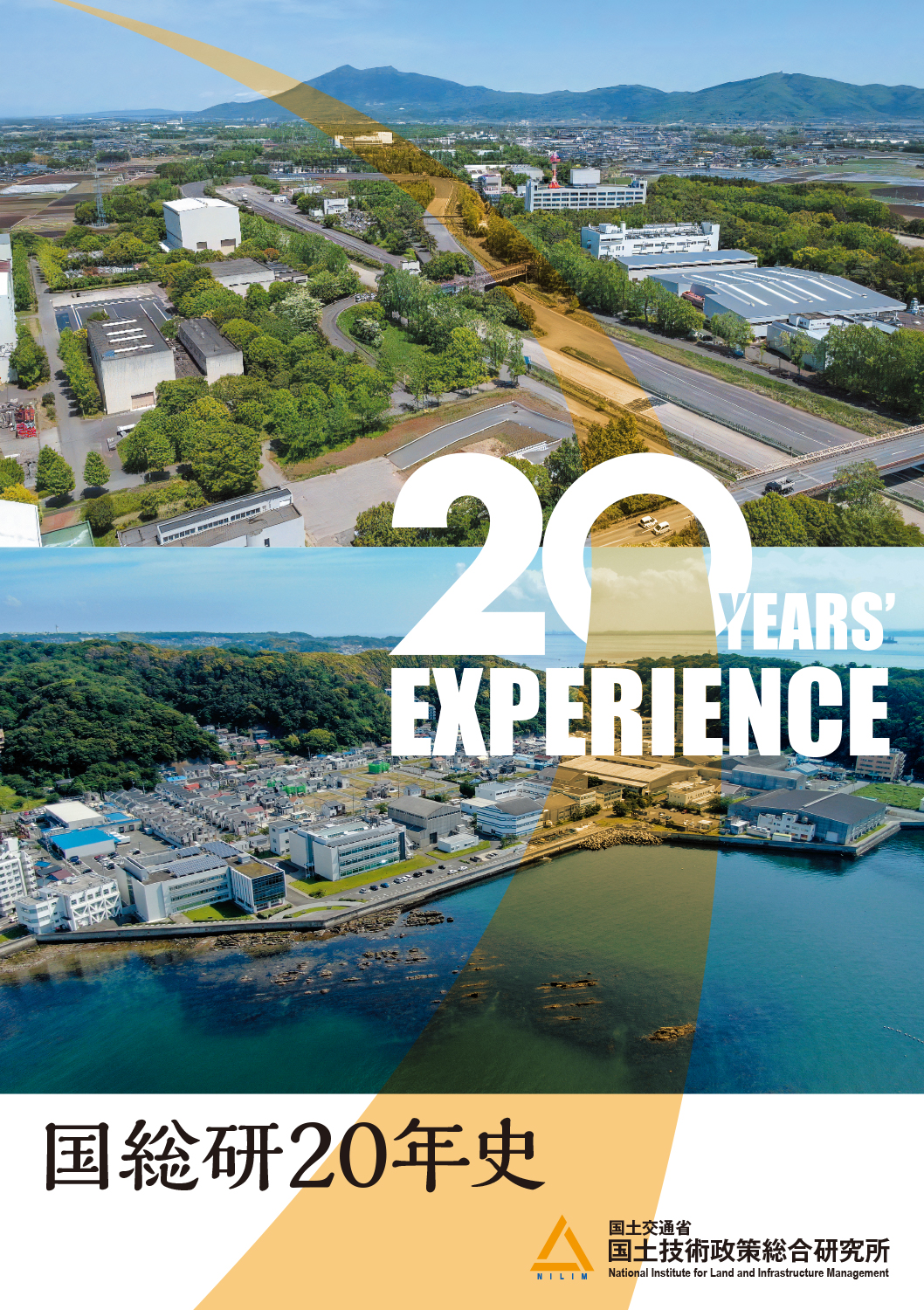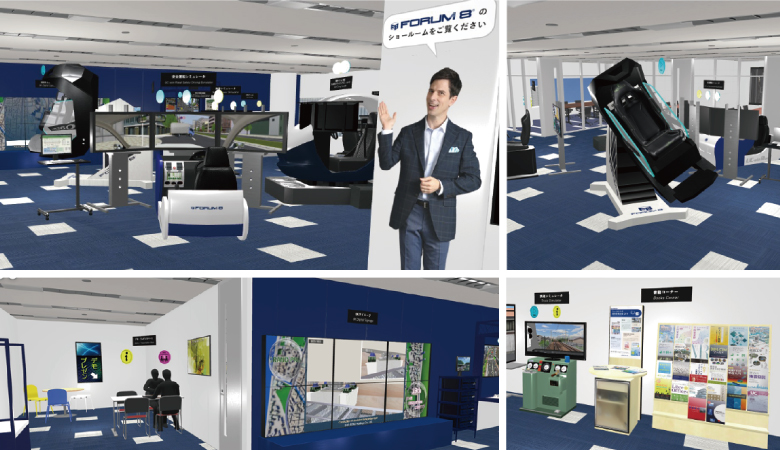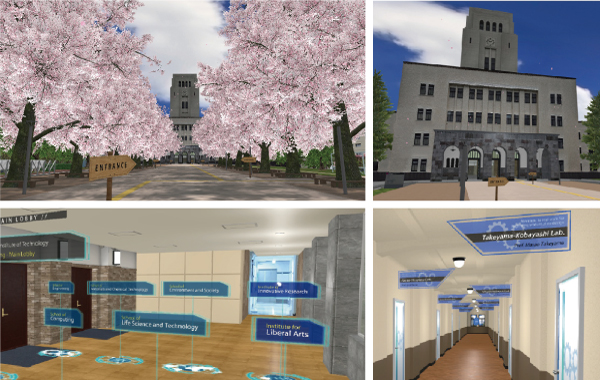|
|||||||||||
|
|
||||||||||
|
|||||||||||
|
|||||||||||
|
Large-scale 4KVR Stereoscopic DS Introduced as Research Platform, With Its Connection with DX Data Center in Mind One of the things that MLIT has been wishing to realize through Infrastructure DX is “improvement in productivity”, which MLIT has been working on since long before as i-Construction. Besides this, it was also aimed at realizing “work-style reform” to change the civil engineering industry that used to be called “3K (3D: Dirty, Dangerous and Demeaning)” into better job environment for all the people working in the industry including the work site. From such a point of view, Mr. Ryo Yuasa, Construction Officer of Planning Division, Planning and Research Administration Department, NILIM says, “BIM/CIM and VR technologies had attracted attention because they are expected to become good weapons.” In other words, it was conceived that compared with conducting experiments and such at the work site, utilization of these technologies should allow them to lead to the largest outcome while removing risk and waste in the cost. Additionally, an advantage was also conceived that even in a case that a researcher may feel awkward about massive experimentation, he or she can make it without hesitation by using a simulator. Moreover, coronavirus pandemic that rapidly became widespread from the beginning of 2020 also lead to the tendency in the civil engineering industry, where contact-type jobs occupy large share, to urge work-style reform. Therefore, people started to work without contacting other people as much as possible, or from remote places, including in experiments. As a result, it has also become an opportunity to start a big change that also contributes to improvement in productivity. Originally, among the research departments, some were utilizing VR technologies or DS individually. Director Ozaki explains, “Based on the fact that we should change work style in this period of time, we thought we would set up what could be used with ease throughout NILIM.” What’s more, as DS can visualize various things three-dimensionally, it is capable of representing inspection technology for infrastructure or river flood etc. Thus, it was required to introduce a simulator effectively applicable across the different fields as a platform in the plural departments with different specialties. In the fall of 2020, Mr. Ozaki, Director, who has an experience of using a similar DS in doing research into road transportation, set necessary specifications for DS before examination as follows:
1) Capable of gaining feeling of immersion by visually covering the human feet area, taking account of simulation of not only automobiles but also bicycles and pedestrians,
2) Realistic driving environment,
3) Assuming inspection of a structure, realizing the ambience that reflects the point of view of the inspector walking around in real time,
4) Assuming diagnosis training of structures, multiple engineers can share the same situation at the same time for one structure, and
5) High resolution in consideration of a possibility of future development. “We have just created a platform equipped with minimum necessary specifications. We hope each research department will apply it properly. We are also considering the ways it can be used by the people outside NILIM.” From such a point of view, Mr. Yuasa, Construction Officer mentions “DX data center” that NILIM is dealing with eagerly. This is designed for centralized control of 3D data such as BIM/CIM of the projects under the direct control of MLIT in the mass storage server of NILIM connected through ultra-high speed-communication-infrastructure, mounting the minimum CIM software, and promoting utilization of them in VR, AR, or autonomous execution by construction machinery. Along with “Construction DX Experiment Field” under development in parallel, he expects possibilities increased by collaboration with the large-scale 4KVR stereoscopic DS. New Publicity Tool “VR NILIM (Kokusoken)”, Expected for Advanced Application “We have been performing events for showing experimental facilities to children several times a year to commit ourselves to public relations, too.” However, since its opening to the public became limited due to the recent prevalence of the novel coronavirus, a new approach to letting the facilities of NILIM known to people ranging from children to grown-ups including those living faraway was searched for. Just as with the 4KVR stereoscopic DS mentioned before, they started examination in the spring of 2020. It was at the end of the year that they decided to adopt “F8VPS”. In the spring of 2021, they created “VR NILIM (Kokusoken)”, reproducing inside of the premises of Asahi Office of NILIM in 3DVR. Then, making minor revisions over and over again, they started to open it on the Website of NILIM in the last June. Having network environment, viewers can stroll through NILIM in VR, feel a large number of experimental facilities of NILIM close at hand, and understand the scale to some extent, according to Mr. Yuasa, Construction Officer. “As a planning division, we hope “VR NILIM” will become a platform for the publicity of the whole NILIM.” Since each research department of NILIM is always dealing with various experiments and technological development, he also mentions the idea of developing VR NILIM into a mechanism that animations and information about those specific experiments and results are placed on VR NILIM so that the viewers can access them.
Wide Flexibility and Huge Possibilities of Future Growth of ICT This time, Mr. Ozaki, Director introduced “Large-scale 4KVR Stereoscopic DS” and “VR NILIM (Kokusoken)” that use advanced ICT freely including VR, not only because of relationship to the policies that MLIT is committed to such as i-Construction and Infrastructure DX, but also from expectation towards the effects on measures against the novel coronavirus. For example, by using VR NILIM and such once, he was actually impressed by their reproductivity and possibilities of further growth. “ICT is very flexible with high degrees of freedom, having high possibilities of future growth. It is a good idea to introduce ICT as much as possible by seizing a good opportunity,” says Mr. Ozaki. |
|||||
| Written by Takashi Ikeno (Up&Coming '21 Fall issue) |
|
||||
|
||||



